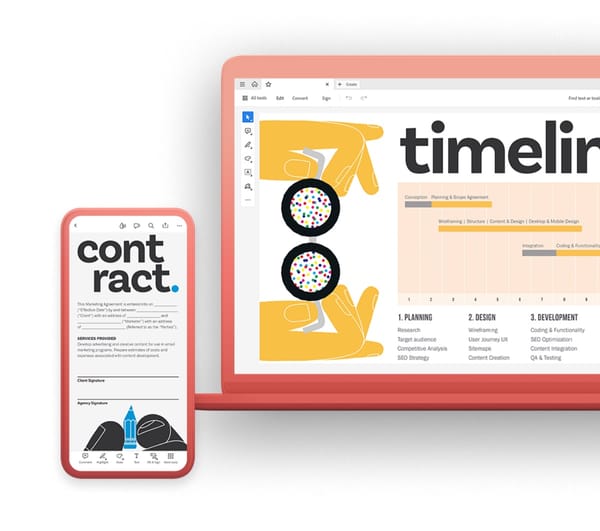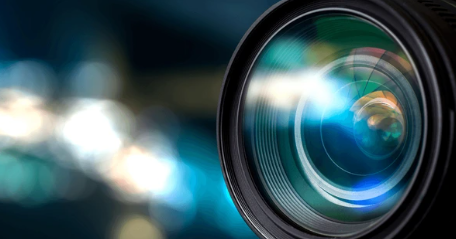Art of Tracing in Adobe Fresco
Tracing in digital art can be a valuable tool for honing your skills, practicing techniques, and replicating existing artwork for reference or inspiration. Adobe Fresco, with its intuitive interface and versatile brush options, allows you to trace seamlessly and efficiently. This comprehensive guide will equip you with the knowledge and techniques to effectively utilize tracing in your Fresco workflow.
Setting the Stage: Preparing for a Smooth Trace
Before diving into the tracing process, some crucial preparatory steps ensure a smooth and efficient experience:
- Choosing Your Reference Image: Select the image you want to trace. Ideally, the image should be high-resolution and have good contrast for easy visibility.
- Importing the Image: In Fresco, navigate to File > Import. Select your reference image and choose the desired import method (e.g., "Place" for a floating reference or "Embed" to incorporate the image into your project).
- Adjusting the Reference: You can adjust the reference image's opacity within the Layers panel. Lowering the opacity allows you to see your tracing lines clearly without being overwhelmed by the reference.
- Brush Selection: Fresco offers a vast brush library. Choose a brush suitable for tracing. Opt for a brush with high opacity and a firm tip like the "Pixel Pen" or "Basic Round" brush for clean, well-defined lines.
Pro Tip: Create a separate layer specifically for your tracing lines. This keeps your tracing organized and allows for easier adjustments later.
Embracing the Trace: Techniques for Accurate Lines
Now that you're prepared, let's explore the tracing process itself:
- Following the Lines: Carefully follow the lines of your reference image using your chosen brush. The higher the zoom level, the more precise your tracing can be.
- Taking Your Time: Tracing doesn't have to be rushed. Focus on replicating the lines accurately and avoid feeling pressured to complete the trace quickly.
- Leveraging Zoom: Utilize the zoom function to focus on specific areas of the reference image, allowing for more controlled and detailed tracing.
- Smoothing Out Imperfections: Don't worry about perfect lines on the first pass. Fresco's smoothing functionality can help even out any wobbly lines you create. Adjust the smoothing settings within the brush options panel for your desired level of smoothness.
- Correcting Mistakes: Tracing mistakes are inevitable. Utilize the eraser tool to remove unwanted lines or adjust the opacity of your tracing layer to make corrections less noticeable.
Remember: Tracing is a learning tool. Focus on understanding the shapes and lines within the reference image, not just replicating them perfectly.
Beyond the Basics: Advanced Tracing Techniques
For artists seeking to elevate their tracing skills, here are some advanced techniques to explore:
- Vector vs. Pixel Brushes: Consider using vector brushes for tracing when you want crisp, clean lines that scale infinitely without losing quality. Pixel brushes are suitable for tracing images with a more textured or painterly style.
- Locking Aspect Ratio: When tracing shapes, activate the "Lock Aspect Ratio" option within the brush settings. This ensures the traced shape maintains its original proportions.
- Tracing for Style Exploration: Use tracing to explore different artistic styles. Trace classic paintings or contemporary illustrations to analyze how artists approach linework and composition.
From Trace to Creation: Leveraging Your Traced Artwork
Once you've finished your trace, you have a solid foundation for further creative exploration:
- Refine Your Lines: After tracing, you can refine your lines further using the brush tool or the "Path Line" tool, which allows for creating smooth, vector-based lines.
- Adding Color: Fill your traced lines with color using the paint bucket tool or the brush tool. Experiment with different color palettes to create unique interpretations of the original artwork.
- Building Upon the Trace: Use your traced artwork as a base and add your own creative elements. This could involve adding backgrounds, incorporating additional details, or changing the composition entirely.
Remember: Tracing is a stepping stone, not a destination. Use it to learn, experiment, and ultimately create your own unique artwork.
Inspiration Beyond the Canvas: Exploring Additional Resources
Here are some resources to further enhance your tracing skills and artistic journey:
- Adobe Fresco Help Center: The official Adobe Fresco Help Center offers tutorials and guides on utilizing various brush tools and functionalities within the app, including tracing techniques.
- Online Tutorials: Numerous online tutorials showcase artists using tracing methods within Fresco. These tutorials offer valuable visual demonstrations and insights.
- Art Challenges: Participate in online art challenges that involve tracing exercises or reinterpretations of existing artwork. This can be a fun way to practice tracing and develop your artistic skills.
Art of tracing in Adobe Fresco unlocks a powerful tool for your artistic development
Here are some additional benefits of incorporating tracing into your workflow:
- Improving Observational Skills: Tracing requires close observation of the reference image, honing your ability to identify shapes, lines, and subtle details. This improved observation translates into stronger overall drawing skills.
- Practicing Linework: Tracing allows you to practice creating clean, consistent lines, which is a fundamental skill for any artist. The more you trace, the more confident you'll become in your linework abilities.
- Understanding Composition: By tracing existing artwork, you gain a deeper understanding of how artists utilize composition to create visually appealing pieces. This knowledge can be applied to your own creations in the future.
- Building Confidence: Successfully completing a traced artwork can boost your artistic confidence. It allows you to see tangible progress and motivates you to tackle more complex artistic endeavors.
Ethical Considerations: Tracing and Copyright
While tracing is a valuable artistic tool, it's crucial to be mindful of copyright laws. Here are some ethical considerations:
- Tracing for Personal Use: Tracing existing artwork for personal practice or reference is generally acceptable.
- Obtaining Permission: If you intend to use traced elements commercially or share them publicly, it's essential to obtain permission from the original copyright holder. This could involve contacting the artist directly or utilizing artwork with a Creative Commons license that allows for modification.
- Giving Credit: If you incorporate traced elements into your own artwork and share it publicly, consider giving credit to the original artist, especially if the traced elements are significant or recognizable.
By being responsible and respectful of copyright laws, you can ensure your tracing practices contribute positively to your artistic journey.
The Final Stroke: Embracing Your Artistic Voice
Remember, tracing is just one tool in your artistic toolbox. While it can be a valuable learning experience, the ultimate goal is to develop your own unique artistic style and voice.
Here are some tips to help you transition from tracing to creating original artwork:
- Start with Simple Ideas: Begin by creating simple drawings and illustrations from your imagination. This allows you to experiment with lines, shapes, and colors without relying on a reference image.
- Practice Regularly: Consistent practice is key to developing your artistic skills. Dedicate time each day or week to create new artwork, even if it's just a simple sketch.
- Find Inspiration: Surround yourself with art that inspires you. Visit museums, browse online galleries, and study the works of artists you admire.
- Don't Be Afraid to Experiment: Embrace experimentation and take creative risks. Don't be afraid to make mistakes, as they are often valuable learning experiences that help you grow as an artist.
By combining the skills learned through tracing with dedication and a thirst for creativity, you can embark on a thrilling journey of artistic self-discovery. So, trace with purpose, learn from the masters, and ultimately, find your own unique voice to express through your artwork in Adobe Fresco.


